Introduction
Lubricants are extensively used in various metal forming processes such as tapping, cutting and drilling. An ideal metal working fluid should be able to provide lubrication at extreme pressures, transfer heat quickly and efficiently, be inert to the metal in contact, non-toxic, eco-friendly and competitively priced. In this application note, the Tapping Torque Tester is used to quantify working fluids and their properties.
Metal working fluids can be synthetic, semi-synthetic or water based. Surge in demand, global competitiveness, environmental and work place regulations are driving innovation in the metal working fluids and lubricant industry. Towards maximizing savings and extending life of the tools, application specific formulations are developed to meet the demands of the modern metal working industry.
To harness the true potential of the cost cutting measures and develop formulations closely matched to the specific industrial application, it is important to develop testing methods that can easily and accurately test formulations with high degree of sensitivity and reproducibility. The main challenges in developing a test method to characterize the lubricants, additives and formulations used in metal working industry lies in the large number of variables faced in the metal working industry. It is difficult to characterize and control various test parameters such as temperature, stress, material, process etc. Thus traditional tribological tests such as pin on disk, plate on disk etc. provide limited information and often fall short in providing the complete picture of the actual process.
Tapping Torque tester combines the advantages of qualitative and quantitative techniques in evaluating metal working fluids. In essence the test involves measuring the torque generated during forming, cutting and drilling making it useful in testing formulations in conditions similar to real world applications. The tapping torque tester can be automated to compare various samples easily and reliably in a time and cost efficient manner.
The major advantages of the tapping torque tester are:
- Testing in conditions close to real applications
- Ease of operation
- Low Cost
- Reproducible results
Materials and Test Setup
Robust design and high torque synchronized motor of the Rtec Instruments tapping torque tester unit offers the unique ability to test and characterize formulations for forming, cutting and drilling. The extremely sensitive, state of the art sensors included in the instrument can highlight differences between formulations which are otherwise considered “similar” in their composition.
In addition to measuring the torque, it is also measures acoustic signal, electric contact resistance and the temperature of the tip to generate more comprehensive information about the formulations tested. The tapping torque tester is versatile and automated allowing the user to test different materials and taps in an easy recipe based method.
Different formulations were evaluated for forming and cutting aluminum and steel samples using Rtec-Instruments Tapping Torque Tester. M6 aluminum and steel taps were used to tap the threads in the samples at 600 RPM. Each test was repeated at least five times on the automated platform. The test set up is shown in Figure 1.
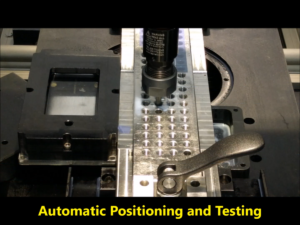
Figure 1: Test Set up for Tapping Torque Tester using Rtec-Instruments Tapping Torque module
- Sample 1- Low concentration of Additive A
- Sample 2- High concentration of Additive A
- Sample 3- High concentration of Additive B
The samples were selected to study the effect of additives and their compositions in the formulations for different applications. Such tests are standard for their intended application in the real world.
Results
Figure 2 shows the results of typical tapping torque tester of sample 2 repeated ten times on the automated platform using steel forming M6 tap on a steel specimen. The acoustic signal and tapping depth is superimposed and shown in Figure 3.
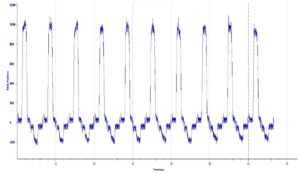
Figure 2 (left): Typical results from the tapping torque tester showing torque measurements for 10 cycles.
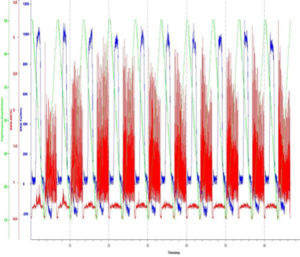
Figure 3 (right): Acoustic and tapping depth measurements.
Overlapping results of various specimens as shown in Figure 4 and Figure 5 can provide comparative information of different formulations. Table 1 summarizes the results obtained from different sets of tests.
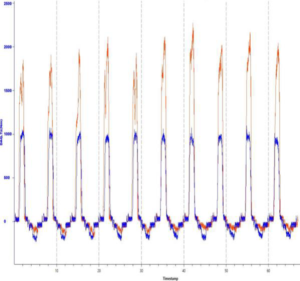
Figure 4 (left): Comparison of torque measurement; sample 2 (blue) and sample 3 (red) in steel forming showing difference in two different kind of additives.
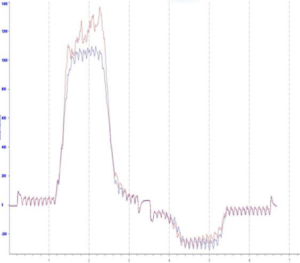
Figure 5 (right): Comparison of torque measurement for different concentrations of additive A.

Table 1: Summary of results of the various tests
Conclusion
Tapping Torque Testing is used as a method to characterize and evaluate lubricants and fluids for the metal working industry using the Rtec Instruments tapping torque tester. It is seen that the easy to use, automated set up with advanced sensors can provide reliable, reproducible data that can evaluate formulations in different processes such as forming and cutting. The instrument is versatile and can support various materials, taps and tapping speeds. The high end sensors make it possible to see differences in formulations that differ by only small percentages of additives making the tool a useful component in an effort to develop and test metal working fluids to meet specific applications.
Watch the video here.
